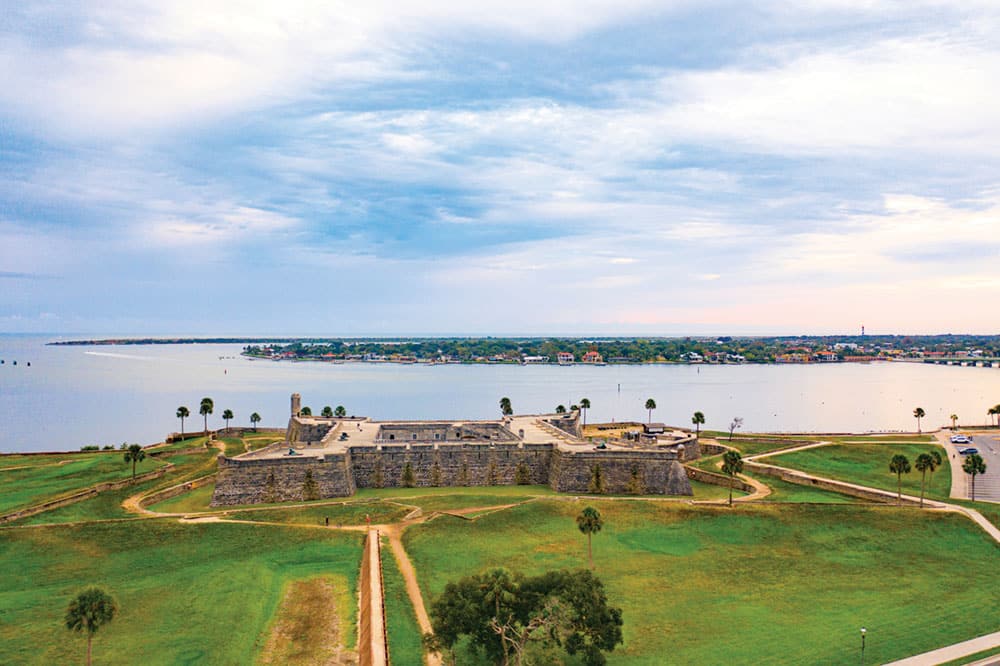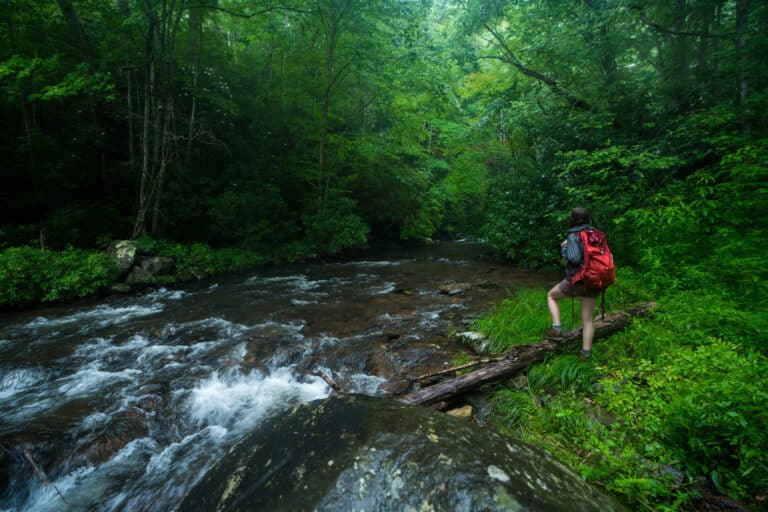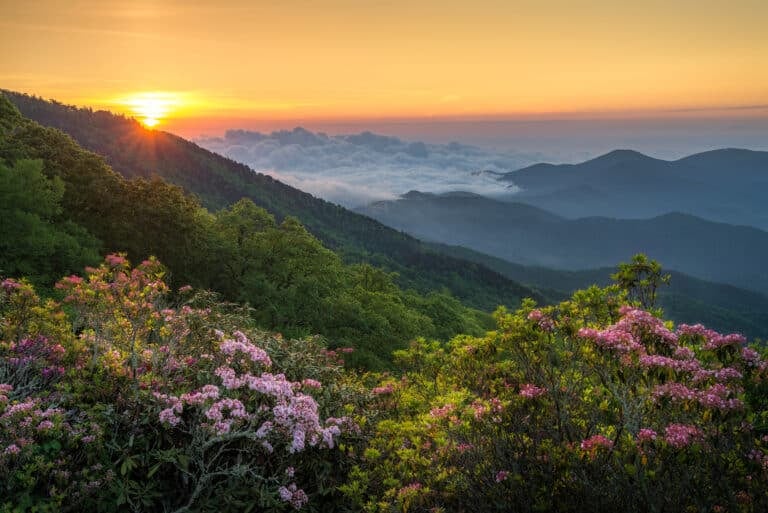Had enough of winter? Then follow the snowbirds to the Southeast’s coast. We’ve rounded up scenic spots where you can walk boardwalks through wetlands or hike sandy trails through coastal nature preserves. Wildlife is abundant, with opportunities to spot birds, alligators, and even dolphins. Many historic sites reveal fascinating stories about the area’s history, and there’s almost always a good microbrewery not far away.
St. Augustine’s Historic Beachfront
Founded by Spanish conquistadors in 1565, St. Augustine—located on the Atlantic coast in northern Florida—is the oldest continuously inhabited, European-established settlement in the United States. One highlight is the Castillo de San Marcos, the oldest masonry fort in the country. The fort was built by the Spanish in the late 17th century using massive blocks of coquina, a sedimentary stone composed of naturally cemented shell fragments. Today Castillo de San Marcos is a national monument managed by the National Park Service. Visitors can tour the fort and explore exhibits about its construction and area history.
Other attractions include walking through the historic downtown, with colonial architecture and many buildings dating from the 18th and 19th centuries. One such building is the Gilded-age Ponce de León Hotel, built in 1887 and now part of Flagler College. Also downtown, you’ll find the St. Augustine Distillery and A1A Ale Works Restaurant & Taproom for post-tour libations.
Located on nearby Anastasia Island, more worthy sites await. At the St. Augustine Lighthouse & Maritime Museum, you can climb the steps to the top of an active lighthouse and learn about 500 years of local maritime history. Nearby is the 1,600-acre Anastasia State Park, known for undeveloped beaches, paddling in the tidal salt marshes, wildlife viewing, and camping.
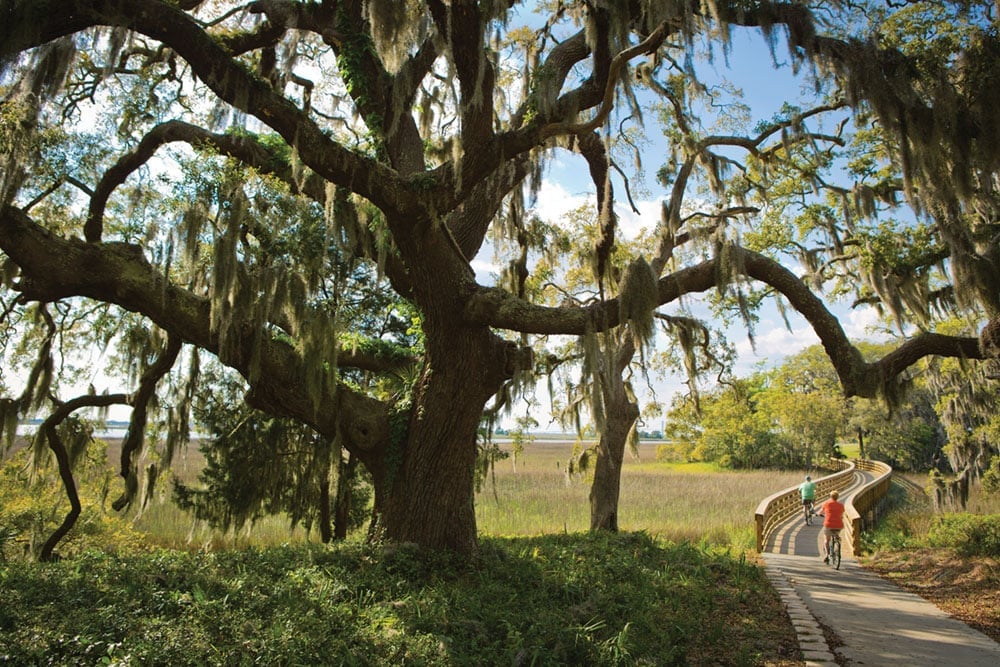
Barrier Solitude on Jekyll Island
A barrier island just north of Cumberland Island National Seashore, Jekyll Island is entirely owned by the state of Georgia and offers a partially developed seaside experience. Unlike Cumberland, which is accessible only by ferry, Jekyll Island can be reached by car on a paved causeway. (Note that a daily parking pass is required.)
Once on the island, a popular activity is cycling the 20 miles of paved paths and gravel trails. Bikes can be rented from several outfitters on the island or bring your own. These shared-use pedestrian and bike paths access most of the island’s key sites, including the Horton House ruins—one of the oldest tabby construction buildings in the state. Other highlights include miles of pristine beach, inland routes through forests of twisty live oak draped in Spanish moss, and a 240-acre historic district.
Mosaic, the Jekyll Island Museum, has exhibits and tours about the island’s history. Nearby, the Georgia Sea Turtle Center offers educational exhibits and the chance to see turtle rehabilitation in action. While many visitors come for a day trip, if you want to stay overnight on the island, there are about a dozen hotels, many homes to rent, and a single campground.

Remote Discovery on Bulls Island
Part of Cape Romain National Wildlife Refuge, in the Low Country of South Carolina, Bulls Island is a 5,000-acre barrier island that is almost entirely undeveloped. Throughout its history, the island has been home to Native Americans, pirates, and enslaved plantation laborers, and, in the 1920s, it was purchased by a New York banker who used it as a nature retreat until the 1930s, when it was given to the U.S. Fish and Wildlife Service.
Today, the island can only be reached by ferry and only day trips are allowed. During the winter season, from December 1st to February 28th, the ferry runs only on Saturdays. Reservations are required and can be made online with Coastal Expeditions.
Most visitors to the island hike along the 16 miles of sandy roads and trails, though a limited number of bicycles can be brought, with advanced reservation, and used on the island’s unpaved roads.
There are many highlights for visitors, including Boneyard Beach, where the sea has eroded into a coastal forest, stripping the bark from trees and leaving bleached trunks that resemble bones. Throughout the island there are several observation towers, and the abundant wildlife includes countless birds and many alligators. Even the ferry ride through the tidal marshes is an adventure, with the chance to see loggerhead turtles or bottlenose dolphins.
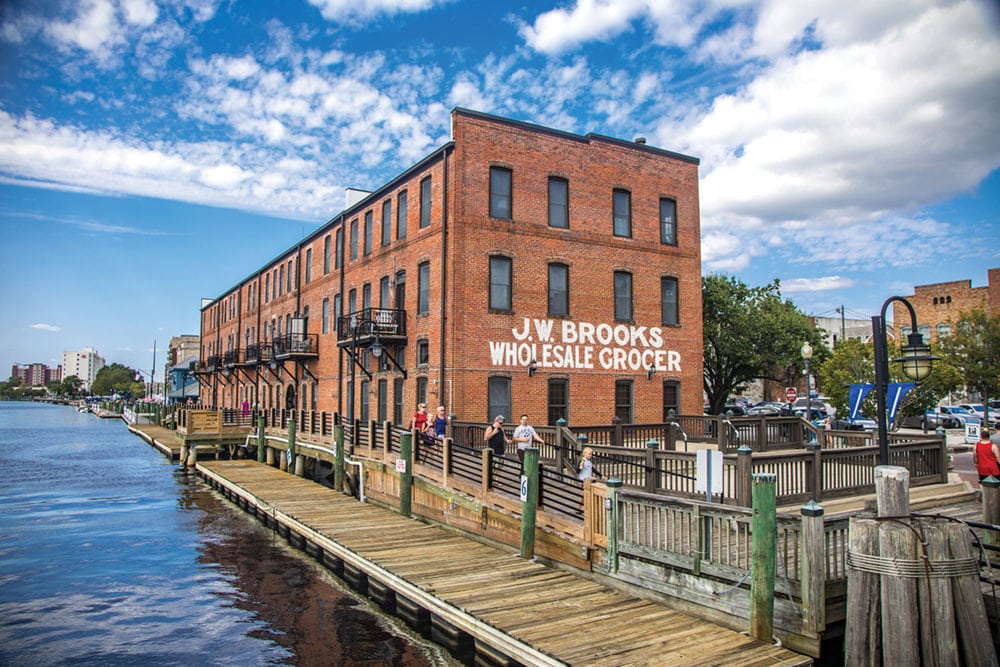
Waterfront Escapes in Wilmington
Located in southeastern North Carolina near Cape Fear, the area around Wilmington offers a variety of outdoor adventure opportunities. Venturing southeast from the city toward the cape leads to the town of Carolina Beach. There you’ll find Carolina Beach State Park.
The park has six miles of hiking trails that wind along the Cape Fear River, through swampy pocosins, and into longleaf pine forests. Perhaps most interesting is the abundance of carnivorous plants like the endemic Venus Flytrap and pitcher plant. The park is also popular for tent and RV camping and paddling on the Cape Fear River. Just outside the park, Good Hops Brewing offers microbrew beers and a free disc golf course.
Continuing south along US-421 leads to Fort Fisher State Historic Site. The highlight here is touring a well-preserved Civil War-era Confederate fort, where earthworks and large guns were used to defend the vital blockade-running trade route to Wilmington. A decisive invasion by the Union in January of 1865 helped seal the outcome of the Civil War.
Back in Wilmington, there’s a two-mile Riverwalk along the Cape Fear River near the historic downtown. If you’re looking for a different type of walk, the Wilmington Ale Trail has no fewer than 20 microbreweries throughout the area, with five of these in walking distance of the Riverwalk and historic downtown.
Just outside of town, the Green Swamp Preserve is for more adventurous explorers. Managed by the Nature Conservancy, the Green Swamp offers a wilderness-like experience in a longleaf pine savannah. A 1.5-mile trail, one-way, leads into the swamp. During frequent wet conditions, waterproof shoes or boots are recommended.
Cover photo: The Castillo De San Marcos in St. Augustine, Florida. Photo by Scott Barnett, courtesy of Visit Florida
